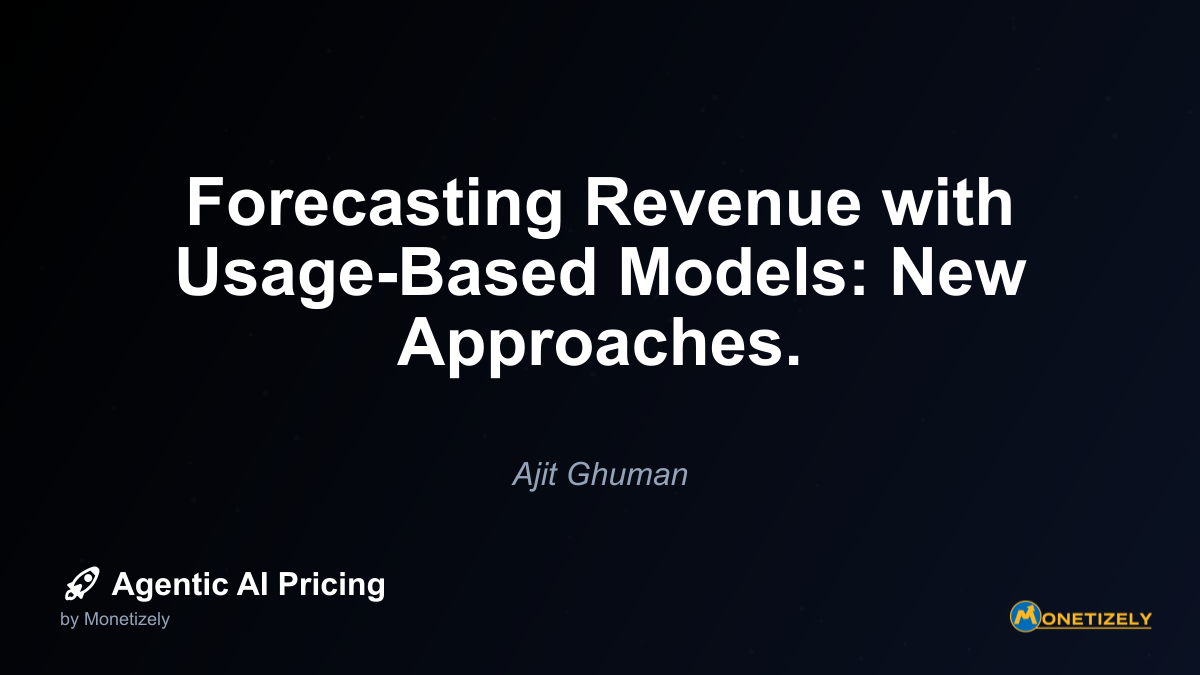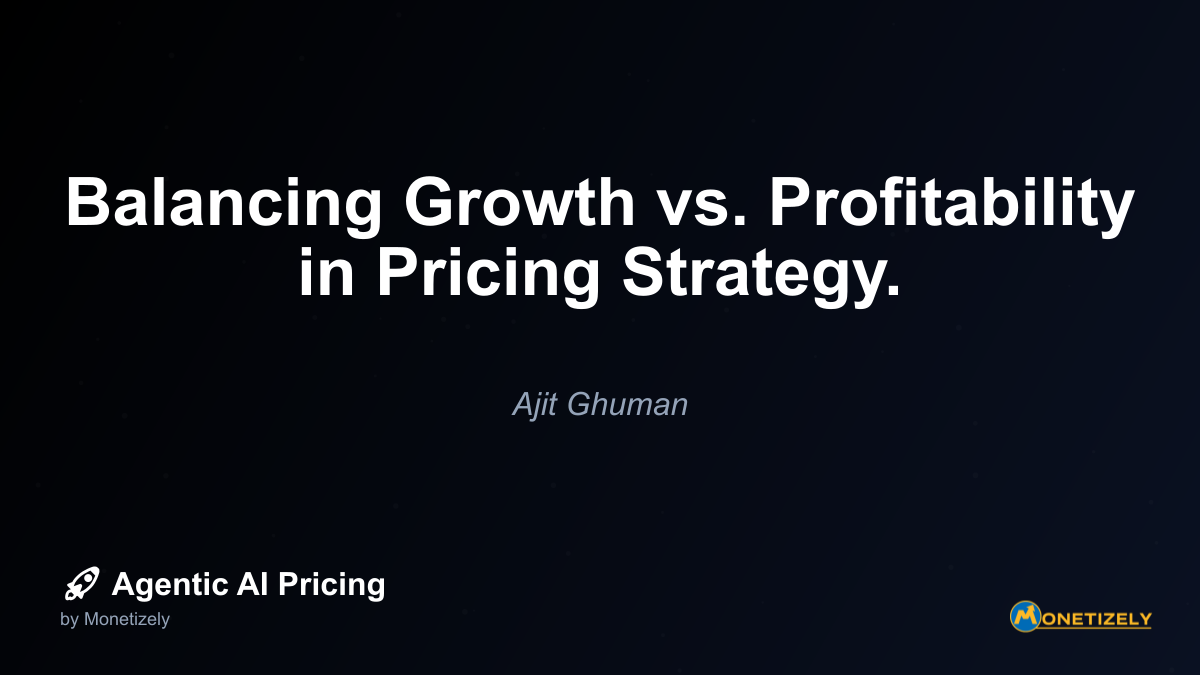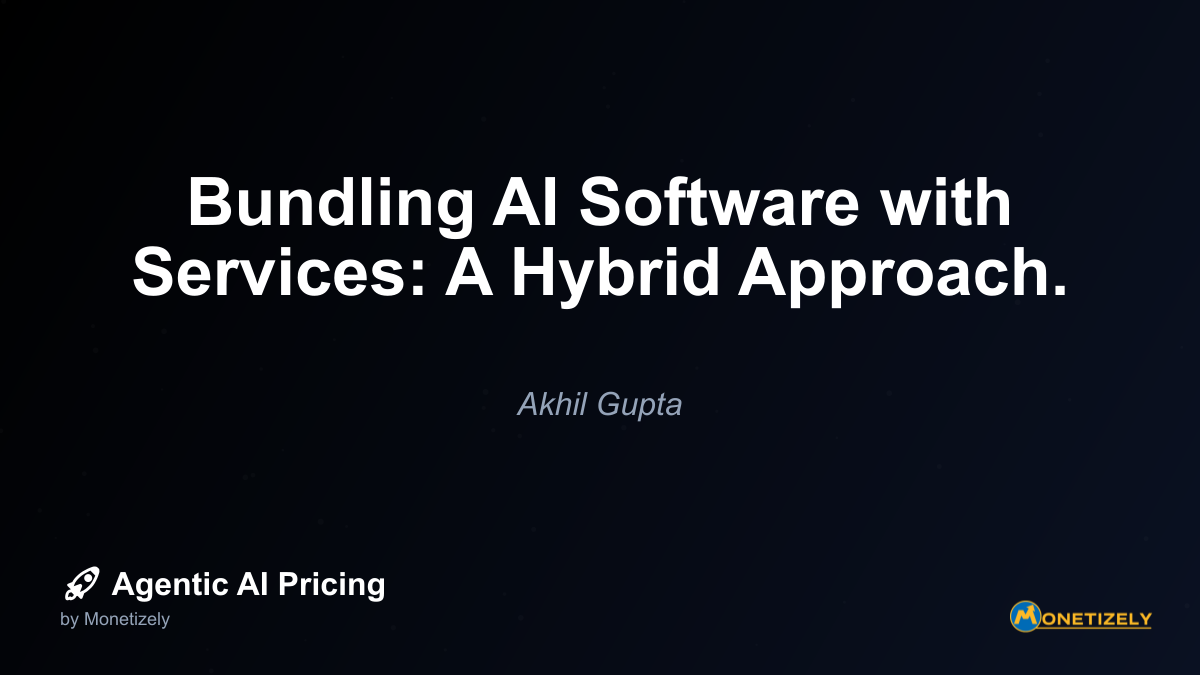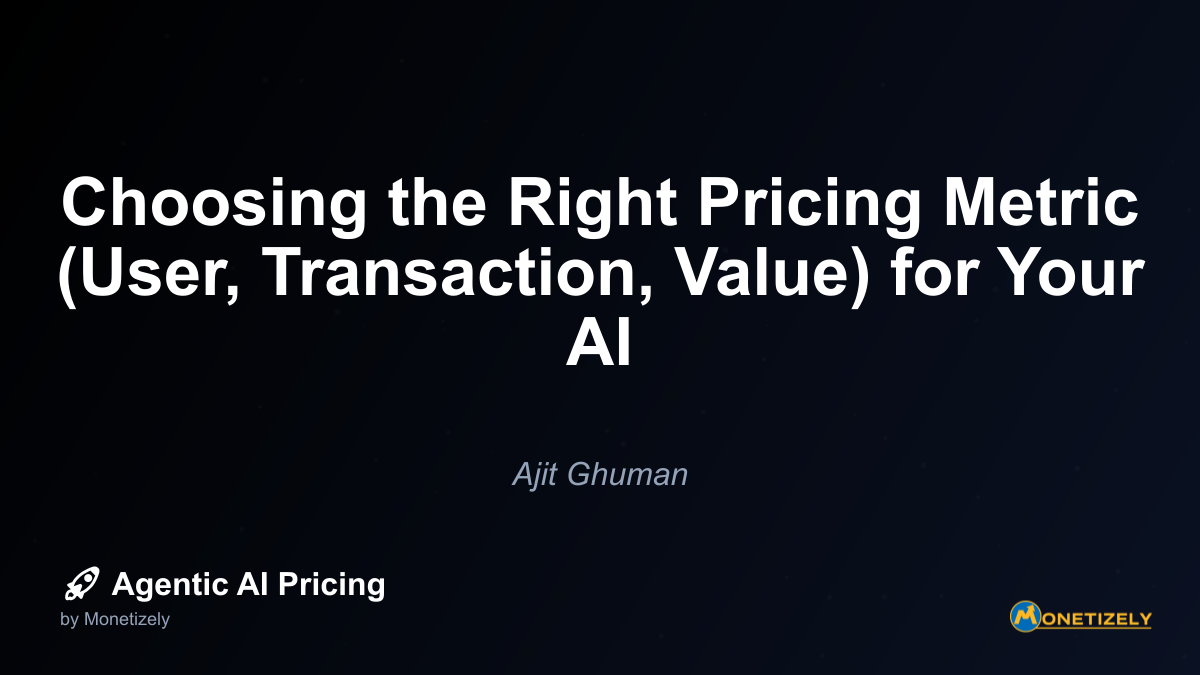· Ajit Ghuman · Strategy & Planning · 8 min read
Forecasting Revenue with Usage-Based Models: New Approaches.
AI and SaaS Pricing Masterclass
Learn the art of strategic pricing directly from industry experts. Our comprehensive course provides frameworks and methodologies for optimizing your pricing strategy in the evolving AI landscape. Earn a professional certification that can be imported directly to your LinkedIn profile.

For a deeper dive into cohort analysis and its applications in SaaS environments, you might find our detailed guide on usage-based pricing through a CFO’s lens particularly valuable.
Machine Learning Models for Usage Prediction
Advanced forecasting incorporates machine learning to identify subtle patterns in usage data. These models can be particularly valuable for agentic AI applications where traditional forecasting methods often fall short.
Key machine learning approaches include:
Time series forecasting: Uses historical data to project future usage trends, accounting for seasonality and growth patterns
Random forest models: Identify which customer attributes and behaviors most strongly predict future usage levels
Clustering algorithms: Group customers with similar usage patterns to refine cohort-based forecasting
Regression analysis: Quantify the relationship between leading indicators (like feature adoption) and subsequent usage growth
For companies with sufficient historical data, these models can significantly outperform traditional forecasting methods, particularly in identifying non-linear relationships between variables.
Implementation Example: AI Content Generation Platform
Consider an AI content generation platform using tokens as its primary usage metric. Their machine learning approach might include:
Collecting historical data on:
- Customer demographics and firmographics
- Initial usage patterns in first 30 days
- Feature adoption sequence
- Content types generated
- Time-of-day and day-of-week usage patterns
Training a model to predict 90-day usage based on first 30-day patterns
Continuously refining the model as new data becomes available
Segmenting predictions by customer type to identify distinct usage trajectories
This approach allows the company to forecast revenue with increasing accuracy as their customer base and data set grow.
Leading Indicators: Early Signals of Usage Changes
Beyond historical patterns, effective forecasting requires identifying leading indicators that signal future usage changes before they materialize in revenue data.
User Engagement Metrics as Revenue Predictors
For usage-based models, user engagement often predicts future consumption. Key leading indicators include:
Active user growth: More users typically translates to more usage
Feature adoption rates: Users exploring new features often expand their usage
Session frequency and duration: More frequent and longer sessions correlate with higher consumption
API integration depth: Customers integrating your service into more systems typically increase usage
User onboarding completion: Thoroughly onboarded users consume more over time
By tracking these metrics, you can identify usage trend changes weeks or months before they impact revenue, allowing for more proactive financial planning.
Establishing Usage-to-Revenue Ratios
To operationalize leading indicators, establish clear ratios between engagement metrics and subsequent revenue:
User-to-revenue ratio: Average revenue per active user over time
Feature adoption-to-expansion ratio: Revenue growth following specific feature adoption
Session-to-consumption ratio: Usage volume per active session
These ratios allow you to translate readily available engagement metrics into revenue projections, providing earlier visibility into financial outcomes.
Example: Developer Tool with API-Based Pricing
A developer tool company charging based on API calls might establish these leading indicators:
New developer signups: On average, each new developer generates $120 in API usage within 90 days
Authentication integration: Developers implementing authentication increase usage by 35% within 60 days
Test environment setup: Customers setting up test environments typically go into production within 45 days, increasing usage by 300%
By tracking these metrics, the company can forecast revenue changes well before they appear in financial reports.
Balancing Predictability and Growth in Usage-Based Models
While forecasting usage-based revenue presents challenges, there are structural approaches to increase predictability without sacrificing the growth benefits of consumption-based pricing.
Hybrid Pricing Models for Revenue Stability
Many companies combine usage-based components with subscription elements to balance predictability and upside potential:
Base subscription + usage: Establish a minimum recurring revenue base with usage-driven upside
Prepaid usage commitments: Customers commit to minimum usage levels upfront with overage charges
Usage tiers with soft caps: Price changes when usage crosses predefined thresholds, but service continues
These approaches create a more predictable revenue floor while preserving the alignment between value delivered and revenue received.
Contractual Terms That Enhance Predictability
Beyond pricing structure, contract terms can significantly impact forecasting accuracy:
Annual usage commitments: Customers commit to minimum annual consumption
Usage floors: Minimum billing thresholds regardless of actual usage
Graduated ramp periods: Contractual usage minimums that increase over time
Auto-renewal provisions: Terms that extend commitments without active cancellation
These terms provide greater revenue visibility while still allowing customers to benefit from usage-based alignment.
Example: Enterprise AI Assistant Platform
An enterprise AI assistant platform might implement a hybrid approach:
- Base platform fee: $10,000/month
- Included usage: Up to 100,000 tasks/month
- Overage pricing: $0.08 per additional task
- Annual commitment: Minimum 80% of estimated usage
This structure provides predictable base revenue while capturing upside from heavy users and creating a contractual floor for forecasting.
Building a Usage Forecasting System: Practical Implementation
Implementing effective usage-based forecasting requires systematic processes and tools that evolve as your business matures.
Data Infrastructure Requirements
Effective forecasting starts with the right data infrastructure:
Usage metering system: Accurate, real-time tracking of consumption metrics
Customer analytics platform: Tracking engagement and leading indicators
Historical usage database: Maintaining detailed usage patterns for model training
Forecasting dashboard: Visualizing predictions against actuals
Scenario modeling tools: Testing different assumptions and variables
Without robust data infrastructure, even sophisticated forecasting models will fail due to incomplete or inaccurate inputs.
Cross-Functional Forecasting Process
Usage-based forecasting requires input from multiple teams:
Product teams: Insight into feature adoption and usage patterns
Customer success: Visibility into customer expansion plans
Sales: Pipeline information and deal structure trends
Data science: Model development and validation
Finance: Historical pattern analysis and scenario development
Establish a regular forecasting cadence with clear roles and inputs from each team to create a comprehensive view of future usage.
Continuous Improvement Through Backtesting
Improve forecasting accuracy through systematic backtesting:
- Compare actual results against previous forecasts
- Identify systematic biases or errors in models
- Refine assumptions based on observed patterns
- Document accuracy improvements over time
This process builds institutional knowledge about which forecasting approaches work best for your specific business model.
Usage-Based Forecasting for Agentic AI: Special Considerations
Agentic AI introduces unique forecasting challenges due to its autonomous nature and potential for rapid scaling.
Autonomous Scaling Patterns
Agentic AI systems often exhibit different usage patterns than traditional software:
Exponential adoption curves: Usage can scale rapidly as agents prove value
Task automation compounding: Each automated process often leads to additional automation opportunities
24/7 operation potential: Unlike human users, agents can operate continuously
Efficiency optimization: Agents may become more efficient over time, potentially reducing certain usage metrics
These patterns require forecasting models that can account for non-linear growth and complex interdependencies between usage factors.
Multi-Agent System Considerations
For platforms supporting multiple AI agents, additional forecasting complexities emerge:
Agent interaction effects: Agents working together may drive higher or more efficient usage
Ecosystem network effects: More agents on a platform can drive adoption of other agents
Agent specialization: Different agent types may exhibit distinct usage patterns
Development lifecycle stages: Usage patterns evolve as agents move from development to production
Forecasting models must account for these interactions to accurately predict consumption patterns.
Example: Enterprise Automation Platform
An enterprise automation platform using agentic AI might observe these patterns:
- Initial deployment phase: Limited usage during testing (1-3 months)
- Production rollout: Linear growth as specific processes are automated (3-6 months)
- Expansion phase: Exponential growth as successful automations lead to new use cases (6-18 months)
- Optimization phase: Usage efficiency improvements moderating growth despite expanding value (18+ months)
Effective forecasting would model each phase separately, recognizing the different growth patterns at each stage.
Communicating Usage-Based Forecasts to Stakeholders
The inherent variability in usage-based forecasting creates communication challenges with stakeholders accustomed to subscription-based predictability.
Educating Investors on Usage-Based Metrics
For public companies or those with external investors, communication strategies include:
Emphasizing annual recurring revenue (ARR): Focus on committed or highly predictable revenue components
Presenting consumption run rates: Demonstrate consistent or growing usage trends
Highlighting net dollar retention (NDR): Show expanding customer value over time
Explaining cohort-based forecasting: Demonstrate how new cohorts follow predictable usage patterns
The key is helping investors understand that while individual monthly revenue may fluctuate, the overall trajectory remains predictable through proper forecasting methods.
Internal Stakeholder Alignment
For internal planning, create alignment through:
Range-based forecasting: Present likely ranges rather than point estimates
Probability-weighted scenarios: Communicate likelihood of different outcomes
Leading indicator dashboards: Share early signals of future revenue trends
Forecast accuracy tracking: Build confidence by demonstrating improving accuracy over time
This approach sets appropriate expectations while providing the visibility needed for effective planning.
Conclusion: Embracing Variability in Usage-Based Forecasting
Usage-based pricing models offer compelling benefits in terms of customer alignment, reduced adoption friction, and expansion revenue potential. While they introduce forecasting challenges, sophisticated approaches like scenario planning, cohort analysis, and leading indicator monitoring can provide the visibility needed for effective financial planning.
For companies adopting usage-based models, particularly in the agentic AI space, the key is building forecasting systems that embrace variability rather than fighting against it. By developing robust data infrastructure, cross-functional processes, and appropriate stakeholder communication, organizations can maintain financial visibility while capturing the growth benefits of usage-based pricing.
As agentic AI continues to evolve, forecasting methodologies will likewise advance. Companies that invest in sophisticated forecasting capabilities today will gain competitive advantage through better financial planning, more strategic resource allocation, and clearer communication with stakeholders about their growth trajectory.
The future of revenue forecasting for usage-based models lies not in eliminating variability, but in understanding, modeling, and communicating it effectively. With the right approaches, companies can achieve both the growth benefits of usage-based pricing and the financial visibility needed for strategic planning and stakeholder confidence.
Co-Founder & CEO
Ajit is the author of Price To Scale, a top book on SaaS Pricing and is the Founder of Monetizely. Ajit has led and worked in pricing and product marketing at firms like Twilio, Narvar and Medallia. His work has been featured in Forbes and VentureBeat. Ajit regularly consults with software companies from Seed stage to post-IPO on pricing strategy. Ajit is also a highly-rated co-instructor for 'The Art of SaaS Pricing and Monetization' on Maven.
Pricing Strategy Audit
Let our experts analyze your current pricing strategy and identify opportunities for improvement. Our data-driven assessment will help you unlock untapped revenue potential and optimize your AI pricing approach.




